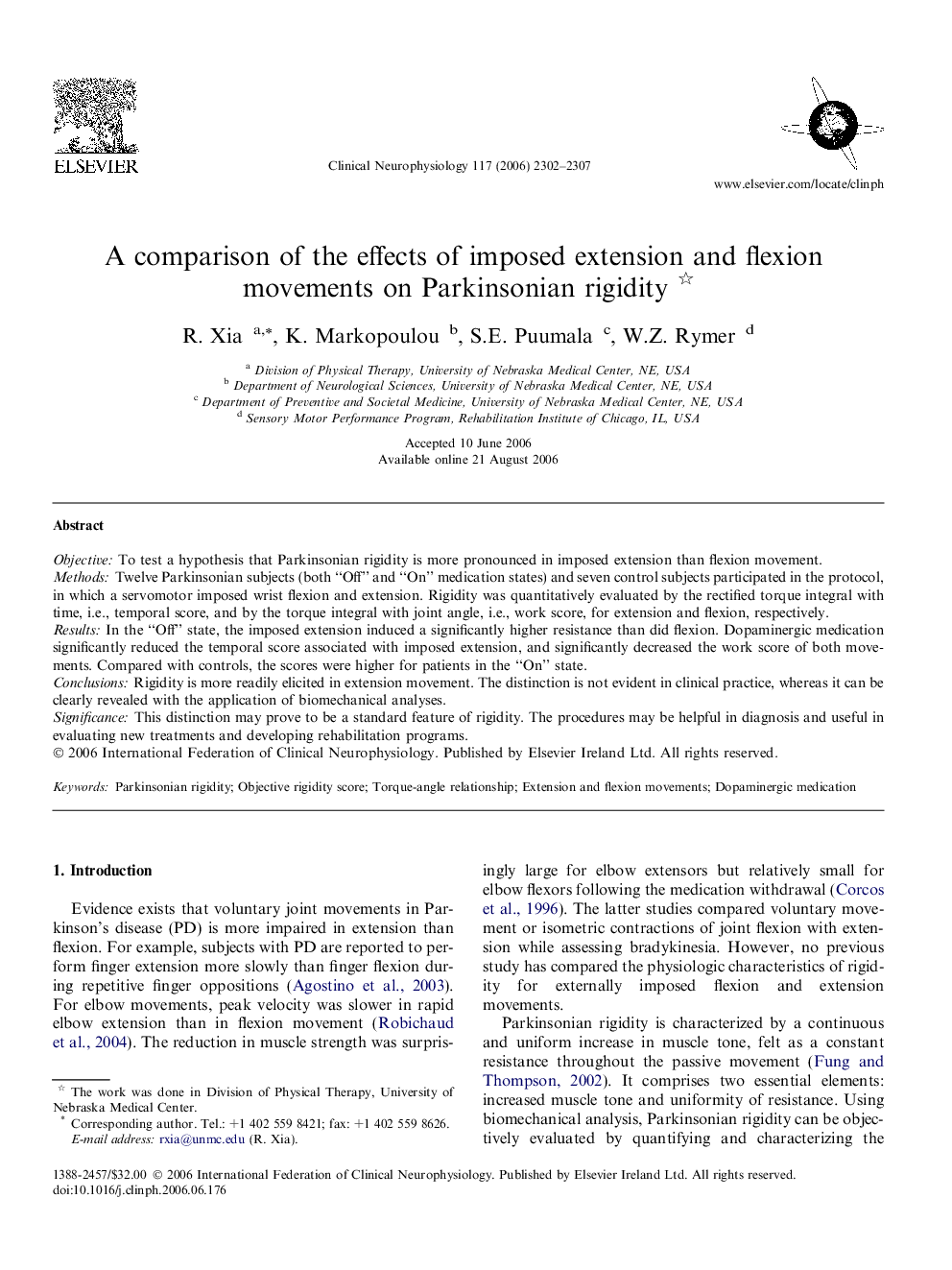| Article ID | Journal | Published Year | Pages | File Type |
|---|---|---|---|---|
| 3047681 | Clinical Neurophysiology | 2006 | 6 Pages |
ObjectiveTo test a hypothesis that Parkinsonian rigidity is more pronounced in imposed extension than flexion movement.MethodsTwelve Parkinsonian subjects (both “Off” and “On” medication states) and seven control subjects participated in the protocol, in which a servomotor imposed wrist flexion and extension. Rigidity was quantitatively evaluated by the rectified torque integral with time, i.e., temporal score, and by the torque integral with joint angle, i.e., work score, for extension and flexion, respectively.ResultsIn the “Off” state, the imposed extension induced a significantly higher resistance than did flexion. Dopaminergic medication significantly reduced the temporal score associated with imposed extension, and significantly decreased the work score of both movements. Compared with controls, the scores were higher for patients in the “On” state.ConclusionsRigidity is more readily elicited in extension movement. The distinction is not evident in clinical practice, whereas it can be clearly revealed with the application of biomechanical analyses.SignificanceThis distinction may prove to be a standard feature of rigidity. The procedures may be helpful in diagnosis and useful in evaluating new treatments and developing rehabilitation programs.
